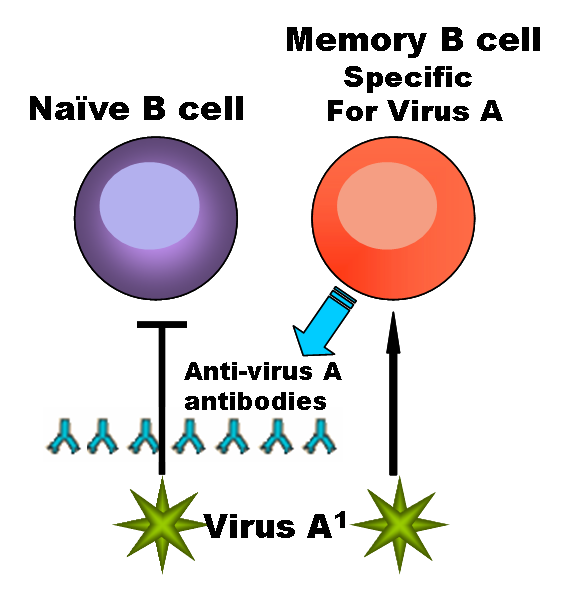Memory B cell

|
WikiDoc Resources for Memory B cell |
|
Articles |
|---|
|
Most recent articles on Memory B cell Most cited articles on Memory B cell |
|
Media |
|
Powerpoint slides on Memory B cell |
|
Evidence Based Medicine |
|
Clinical Trials |
|
Ongoing Trials on Memory B cell at Clinical Trials.gov Trial results on Memory B cell Clinical Trials on Memory B cell at Google
|
|
Guidelines / Policies / Govt |
|
US National Guidelines Clearinghouse on Memory B cell NICE Guidance on Memory B cell
|
|
Books |
|
News |
|
Commentary |
|
Definitions |
|
Patient Resources / Community |
|
Patient resources on Memory B cell Discussion groups on Memory B cell Patient Handouts on Memory B cell Directions to Hospitals Treating Memory B cell Risk calculators and risk factors for Memory B cell
|
|
Healthcare Provider Resources |
|
Causes & Risk Factors for Memory B cell |
|
Continuing Medical Education (CME) |
|
International |
|
|
|
Business |
|
Experimental / Informatics |
Editor-In-Chief: C. Michael Gibson, M.S., M.D. [1]
Memory B cells are a B cell sub-type that are formed following primary infection.
Primary response, paratopes, and epitopes
In wake of first (primary response) infection involving a particular antigen, the responding naїve (ones which have never been exposed to the antigen) cells proliferate to produce a colony of cells, most of which differentiate into the plasma cells or the effector B cells (which produce the antibodies) and clear away with the resolution of infection, and the rest persist as the memory cells that can survive for years, or even a lifetime.
To understand the events taking place, it is important to appreciate that the antibody molecules present on a clone (a group of genetically identical cells) of B cells have a unique paratope (the sequence of amino acids that binds to the epitope on an antigen).
And, each time these cells are induced to proliferate due to an infection, the genetic region coding for the paratope undergoes spontaneous mutations with a frequency of about 1 in every 1600 cell-divisions (this is a very high frequency considering the frequency with which these cells divide; compare with frequency of mutations in other cells--1 in 106).
Secondary response and memory
All these events occur in the highly "eventful" germinal centers of lymphoid follicles, within the lymph nodes.
Some of the resulting paratopes (and the cells elaborating them) have a better affinity for the antigen (actually, the epitope) and are more likely to proliferate than the others (not unlike Charles Darwin's concept of "natural selection").
Moreover, with each such exposure to the antigen the number of different clones responding to the same antigen increase (polyclonal response), and a greater number of memory cells persist. Thus, a stronger (basically, more number of antibody molecules) and more specific antibody-production are the hallmarks of secondary antibody response.
The facts that all the cells of a single clone elaborate one and only one paratope, and that the memory cells survive for long periods, are what impart a "memory" to the immune response.
This is the principle behind vaccination and administration of booster doses.